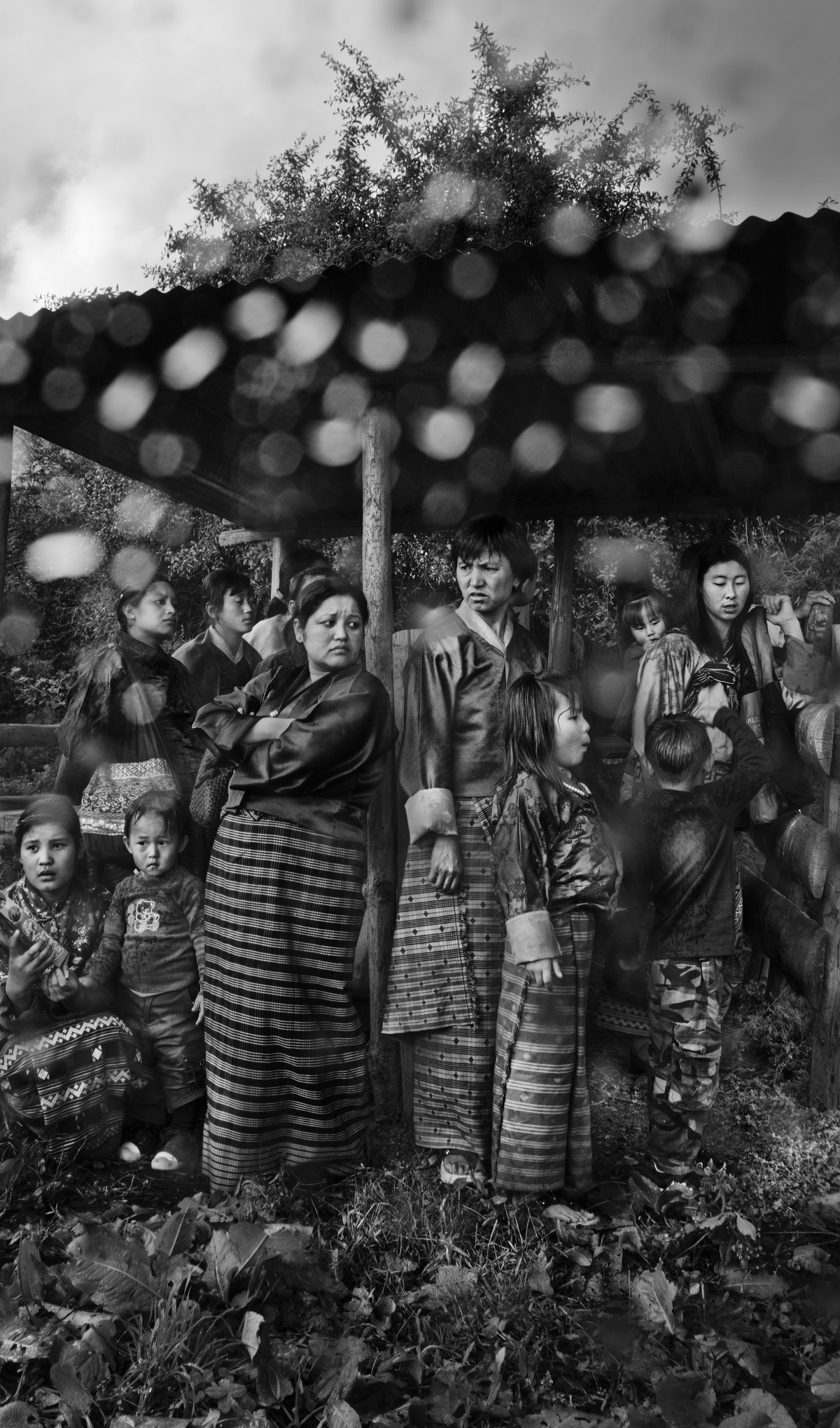WWF Finlands och Meeri Koutaniemis fotoutställning Ögonvittnen – Berättelser om möten mellan människa och natur i östra Himalaya berättar om Bhutan, där en del av människorna bor i en nationalpark omgivna av vilda djur. Människorna på bilderna berättar om samexistens som omfattar värdefulla naturupplevelser, men även konflikter.

”There are a lot of wild animals here: bears, moose and birds. I have also seen tiger pawprints and scratch marks, “says forest ranger Sangay Penjor.
Penjor works in a Bhutanese national park in the eastern Himalayas. In Bhutan people live side by side with wild animals, and the daily coexistence creates encounters and conflicts. WWF works together with the villagers to prevent problems between humans and wildlife. For example, through livestock insurance scheme, the damages caused by wildlife are compensated. At the same time WWF works to combat the poaching of endangered animals.

”I have seen many traps set by poachers. In 2012, in particular, many musk deers, tigers and snow leopards were poached in the region. Since then, poaching cases have decreased because patrolling and surveillance has been strengthened, with WWF’s support”, says forest ranger Kesang Tenzin.
Photographer Meeri Koutaniemi visited Kesang Tenzin in Wangchuk Centennial Park in Bhutan. The presence of endangered animals in the Eastern Himalayan region is being studied in the park. The results of the research enables the protection to be targeted more efficiently.
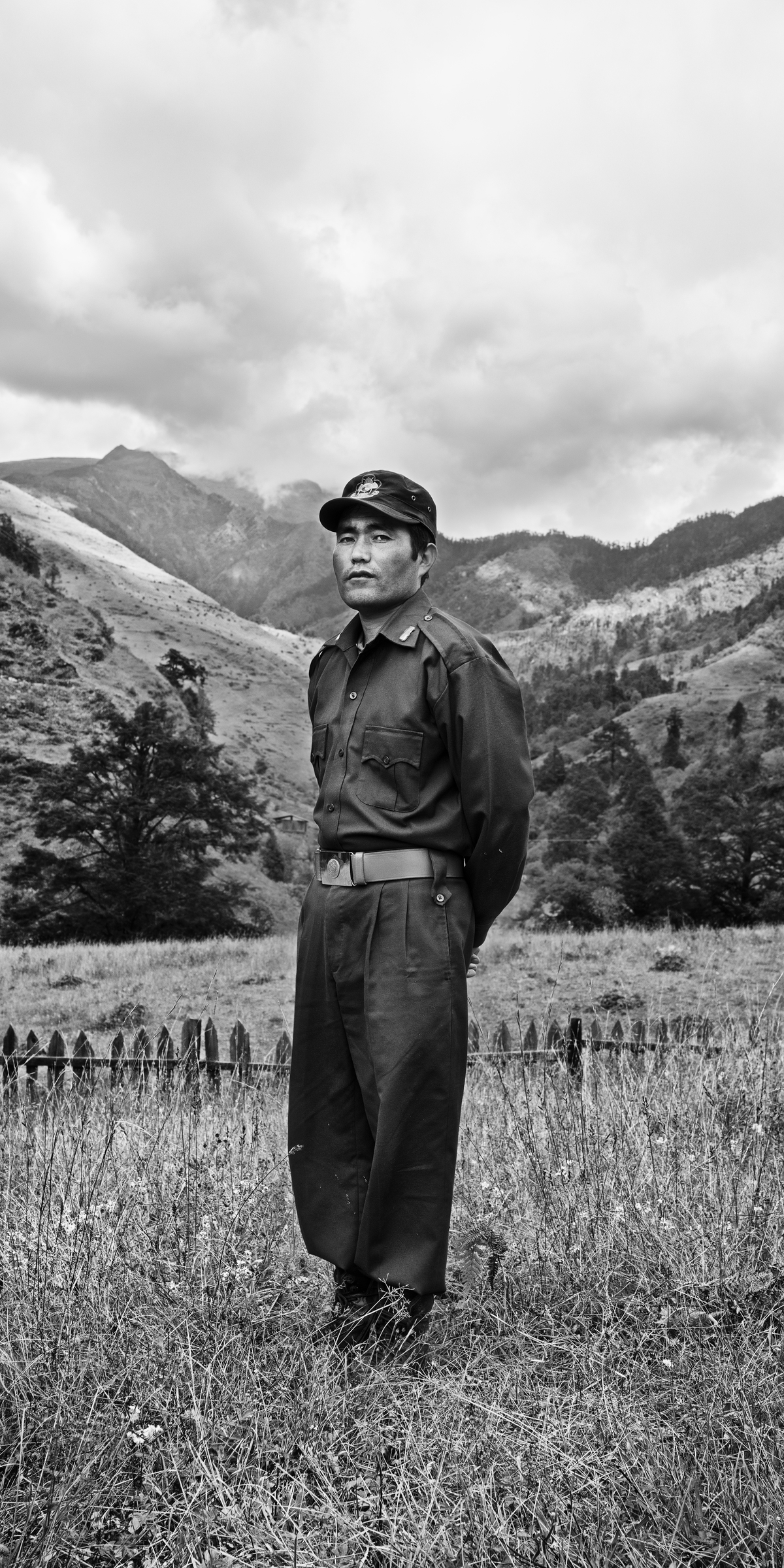
”I’ve seen a snow leopard in the wild: Once at springtime I spotted it high in the mountains. We both got scared. I think that it was stalking for prey, because it didn’t move. Only a blink of an eye passed and it was already gone. I didn’t see it anymore, “says forest ranger Ratna Bdr. Mongar.
Ranger Mongar also says that the environment and the weather conditions have changed in the Himalayas. Among other things, the tree line has risen, which decreases the habitat of the endangered snow leopard. In order to preserve the area’s natural diversity and human well-being, WWF Finland together with WWF Bhutan develop sustainable livelihoods and ways to adapt to climate change in Bhutan.
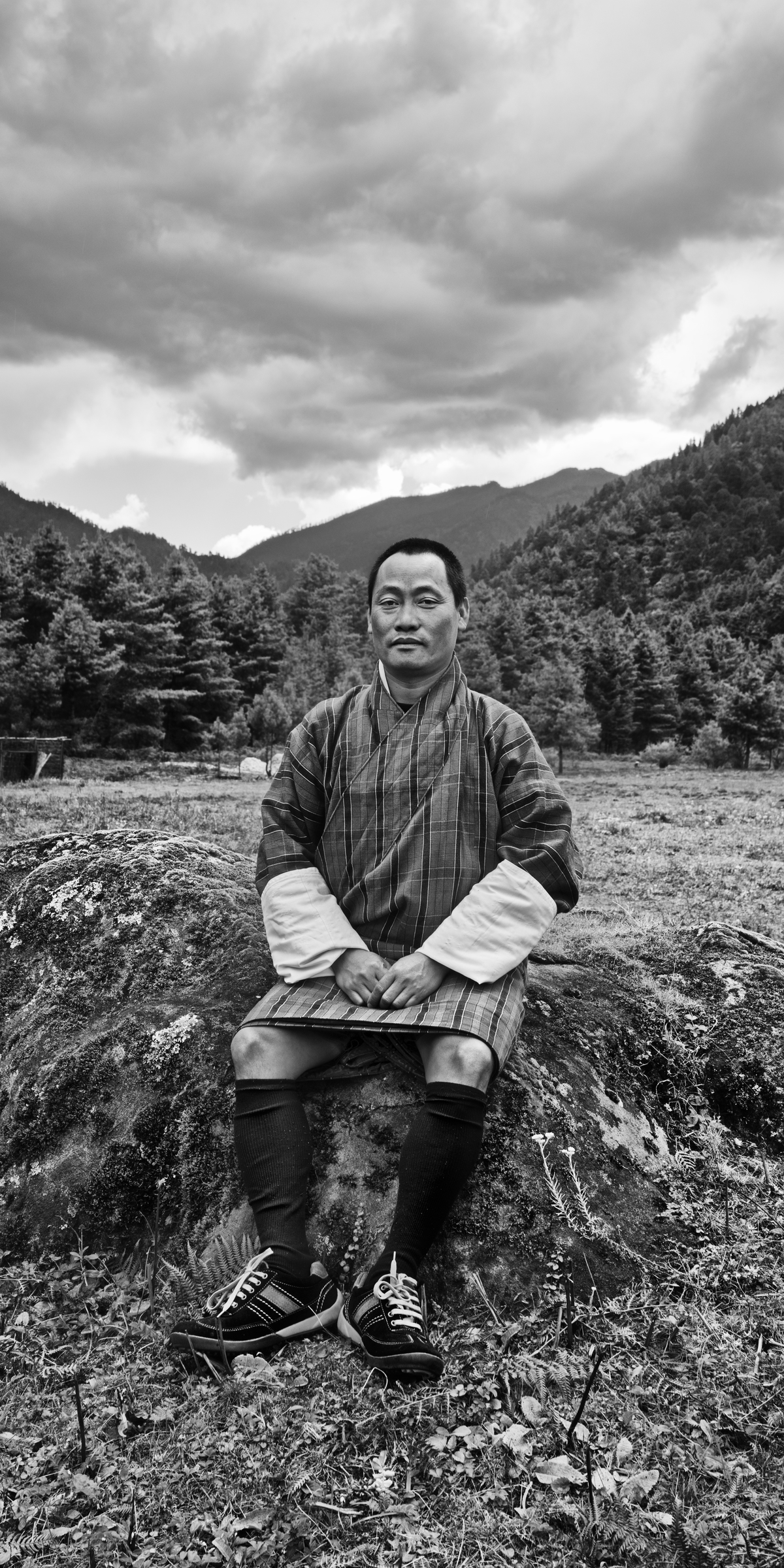
”I like my job. The best part is, when the forest rangers share stories from the field and when I get to follow them on the patrolling rounds, “says Thinley Dorji who works at Conservation Center of the Wangchuck Centennial National Park, which is supported by WWF Finland.
The goal of the national parks is to maintain the biodiversity of the unique Bhutanese nature, which is slowly opening up for tourism. WWF is developing eco-tourism together with the Government of Bhutan to ensure nature sites can be visited in an ecologically sustainable way. Through environmental conservation WWF aims to ensure that both human and animal well-being will be preserved.
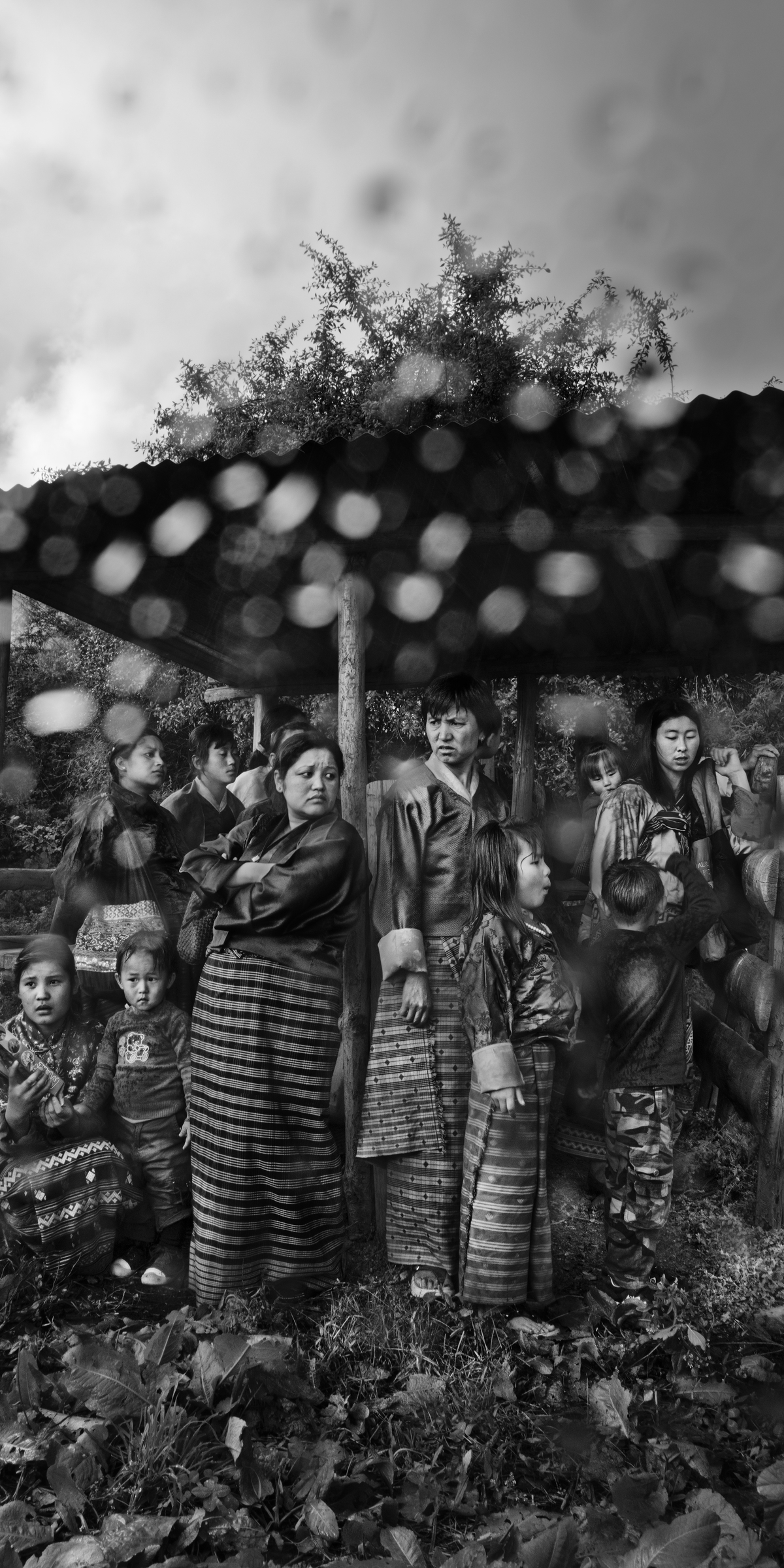
Women are waiting for the rain to stop in the village of Bumthang, which is located in Bhutan, in the Eastern Himalayas. The women pictured by Meeri Koutaniemi were taking part in a Buddhist celebration, where the monks covered their faces with wild animal masks. The Celebration aims to remind people of the importance of all forms of life.
In the Buddhist Bhutan, people have a respectful relationship with nature. However, the pressure on natural resources is growing in Bhutan. WWF offers alternative livelihoods in order to reduce the unsustainable use of natural resources and to support local people’s well-being.
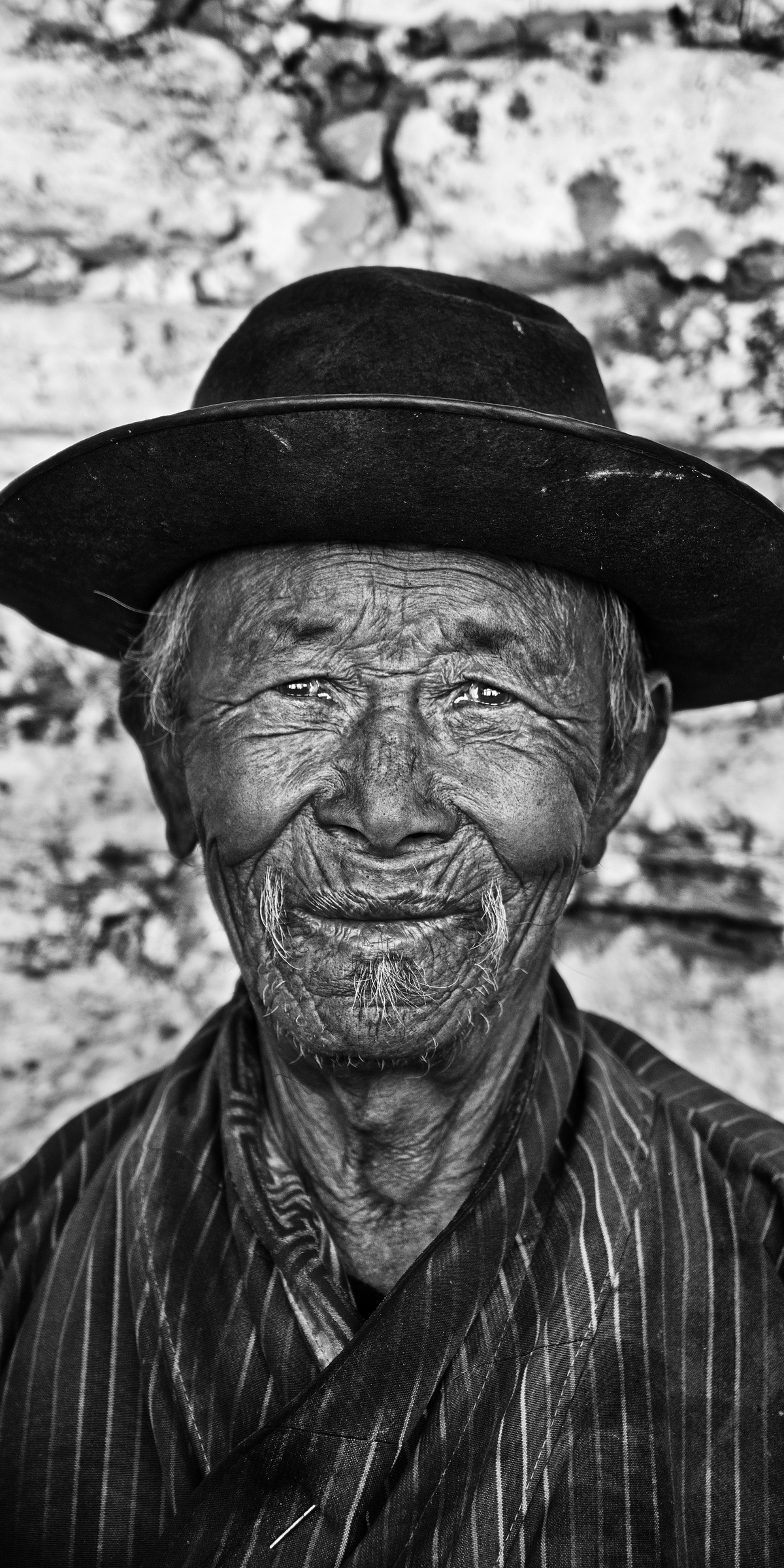
Some of Bhutan’s citizens live in a national park, surrounded by wildlife. One of them is an elderly man, photographed by Meeri Koutaniemi, who lives in the Nasiphel village and receives his livelihoods from farming. Farmers say that the rise in temperature is already visible in the everyday life of the Bhutanese. The area has experienced unpredictable weather events such as heavy rain and hail storms, which reduce the yields and increase the number of pests.
WWF is looking for ways to adapt to climate change in the Himalayas, for example, by installing weather stations in the national parks. The goal is to ensure the long-term conservation of biodiversity and human well-being in Bhutan.
The world behind the photos
Remote Bhutan in the East Himalayas is home to a unique group of people. The photographs below by Meeri Koutaniemi depict Bhutanese culture and our work in Bhutan.
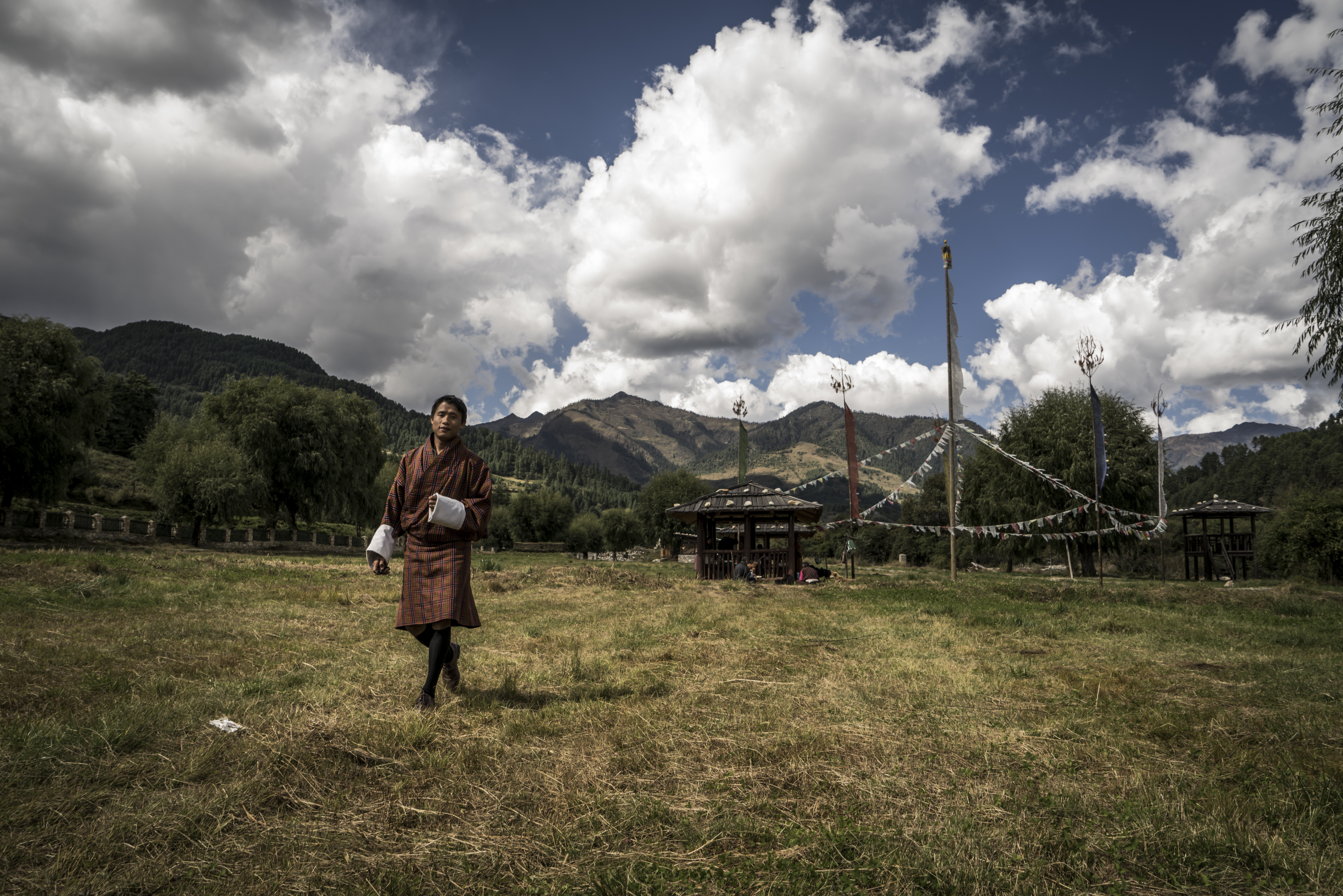
Around 70 per cent of the area of Bhutan is covered by forests. Forests are vital to the region, because they maintain the flow of rivers from the snowy peaks of the Himalayas to the fresh water basins used by Bhutan and its neighbouring countries. WWF supports Bhutan’s forest conservation measures, aiming to secure the supply of clean water also in the future.
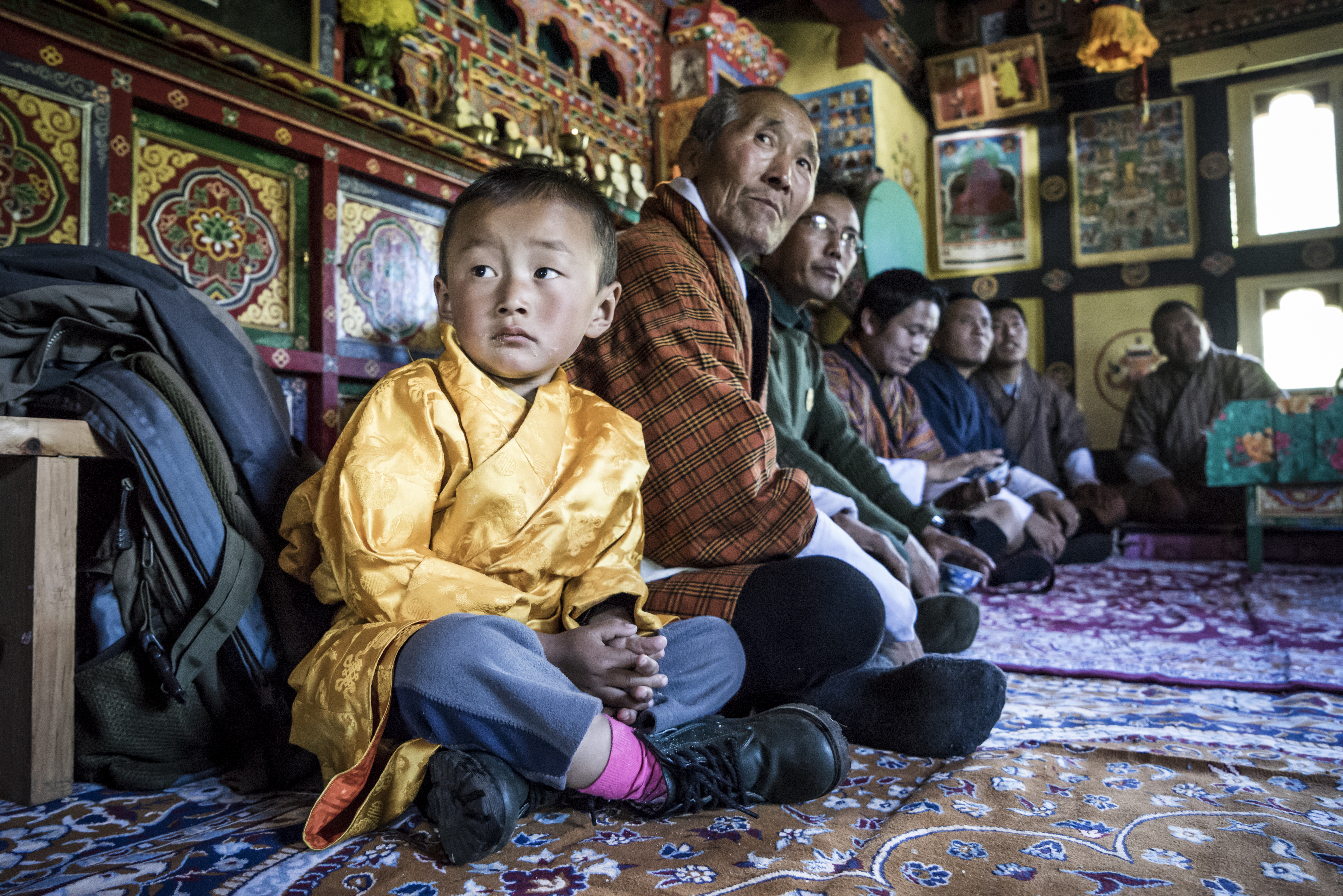
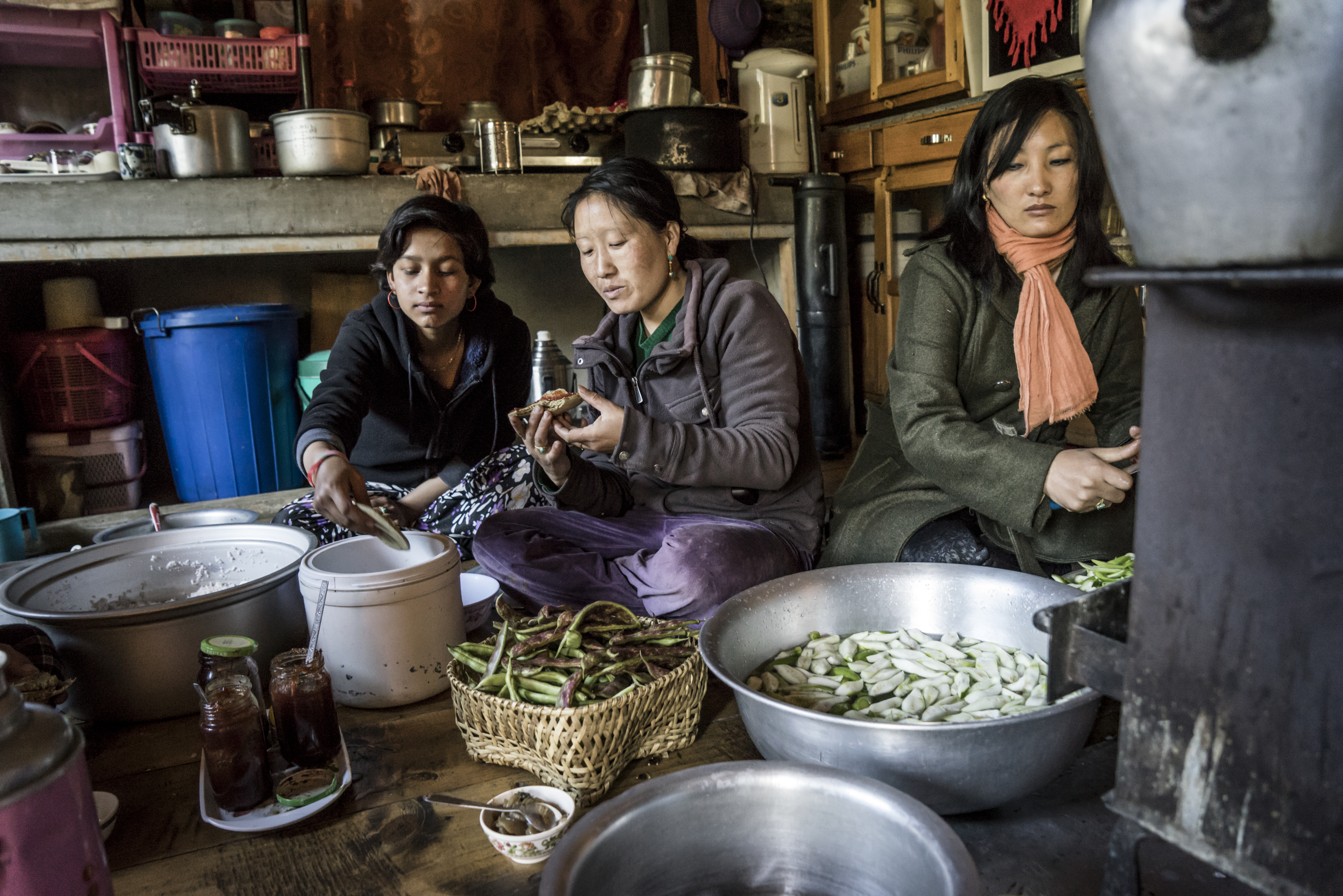
Women preparing a bean dish for homestay guests in Nasiphel. WWF promotes eco-friendly tourism in Bhutan by, for example, supporting local homestay providers. When the families notice how the unique nature of the area can be a source of income and well-being for the entire community, they become more eager to protect it.

Bhutanese politics are based on an understanding of the environment as the foundation for all life and humanity. Bhutan measures the happiness of its people regularly with the Gross Domestic Happiness Index it has developed. In addition to environmental protection, the index measures sustainable development, which will secure good living conditions also for future generations.
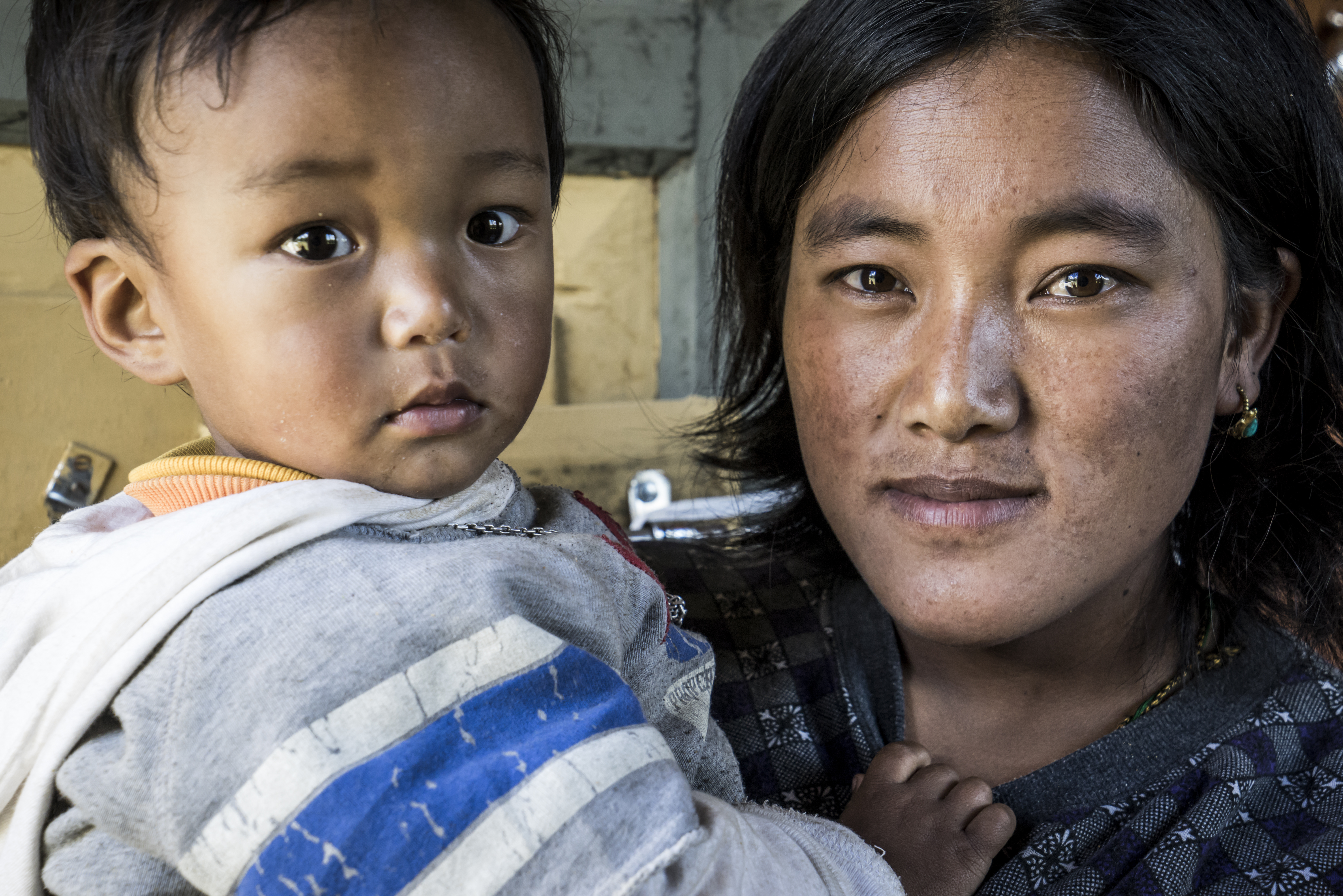
27-year-old farmer Chimmi lives in the village of Kitzom with her husband and two children. Chimmi’s main produce is potato, and she dances in the local dance group in her free time. “Dancing makes me happy.”
Bhutan is a secluded country in global comparison, but, in recent years, it has slowly started to open up for tourism. The opening of Bhutan’s borders and growing consumption must be developed in an ecologically sustainable manner in order to preserve Bhutan’s unique natural environment for future generations.
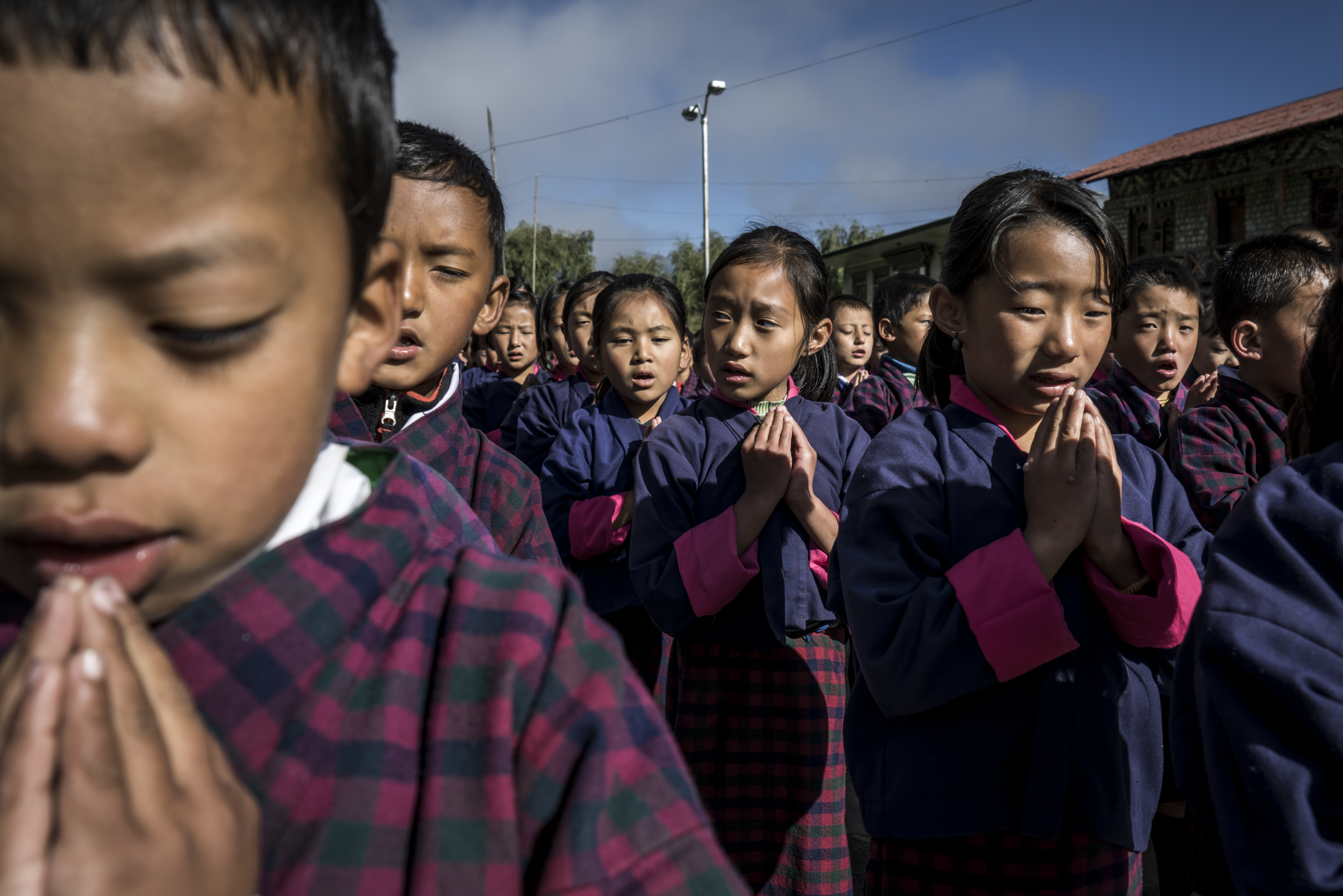
WWF supports the Sephu primary school in Bhutan. The school cooperates with the forest rangers working nearby. They teach the children about nature and wildlife. Spreading information and raising awareness are effective means of protecting endangered species, such as tigers and snow leopards.
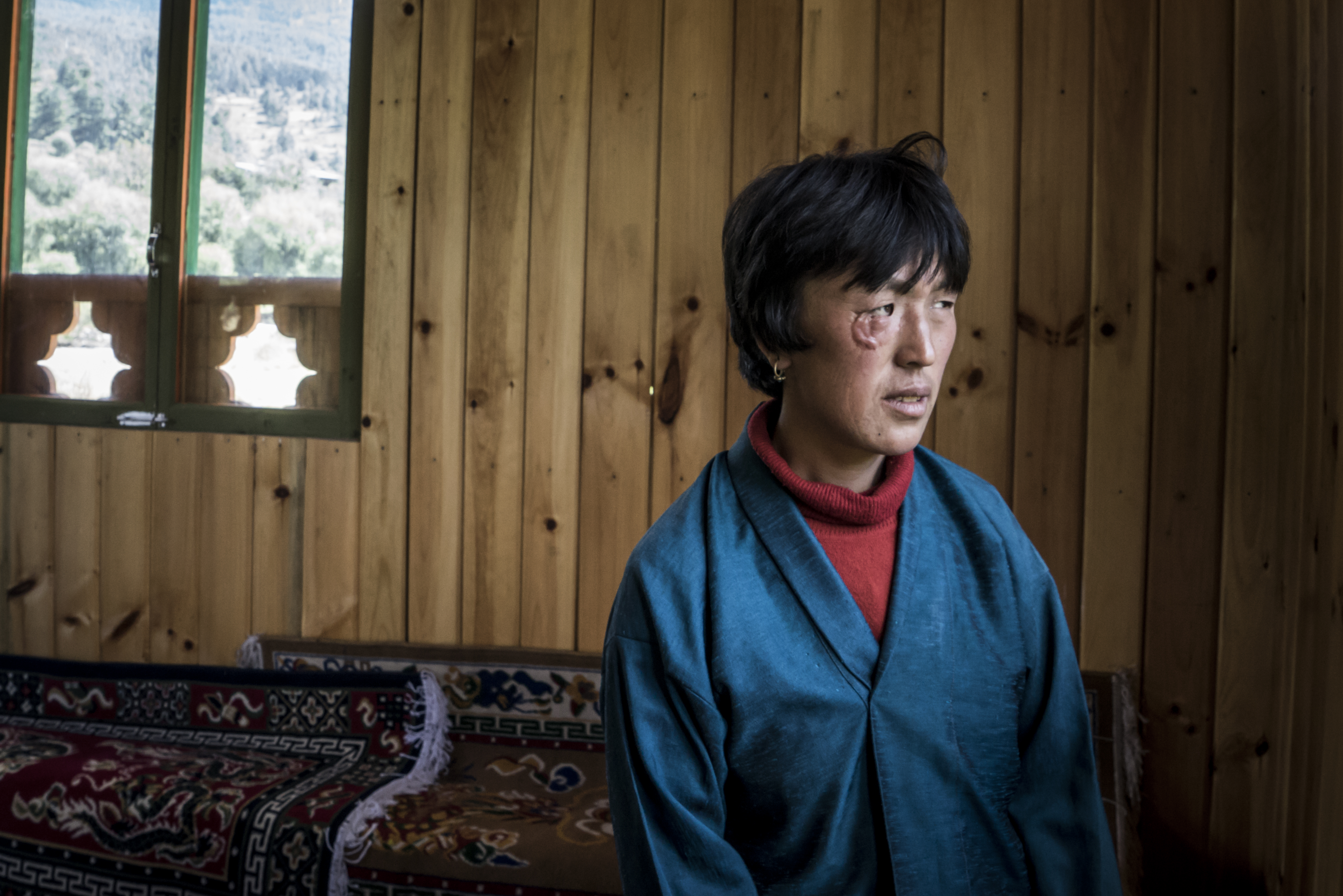
“I was attacked by a Himalayan black bear when I was herding cattle in the woods. The bear’s claws hit my eye, pulling my eye out. I had no other option but to push it back in. My eye has been fixed, and I can see again. I’ve been afraid of bears since the attack, but I haven’t been angry. I respect nature, and I could never kill a wild animal,” farmer Kencho Wengmo says.
Some Bhutanese people live in national parks, and WWF works with them to develop ways of coexistence between humans and wildlife. Local residents can, for example, join a predator compensation fund that compensates them for losses of domestic animals.
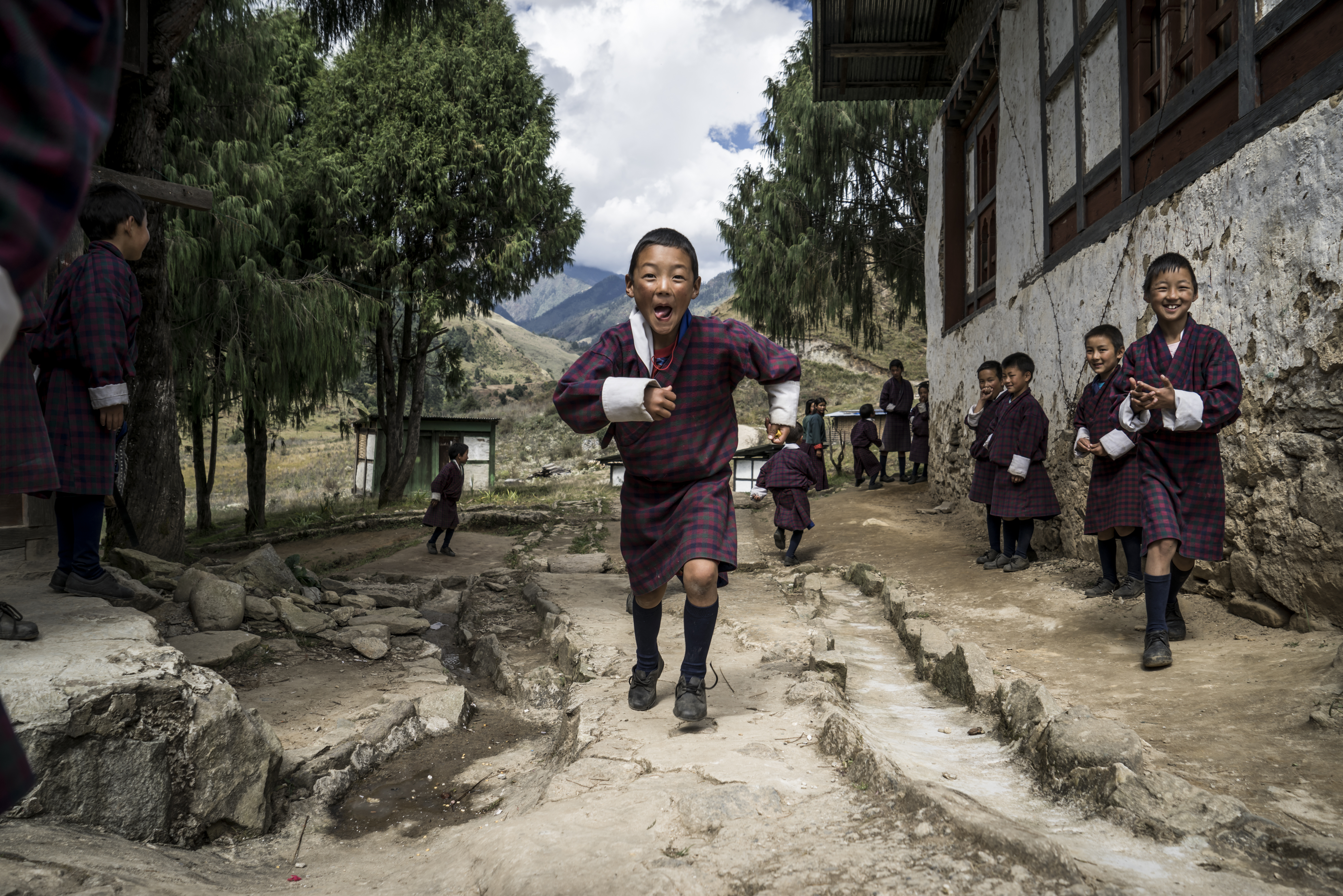
The relationship with nature is formed early on. Environmental education is part of the Bhutanese school curriculum, and the children learn to take responsibility for the environment in primary school. For example, the boy playing in the schoolyard of the Wangdicholing primary school earns money for his school by recycling waste in his village. Recycling also improves hygiene in the area, as animals no longer spread the waste in the environment.
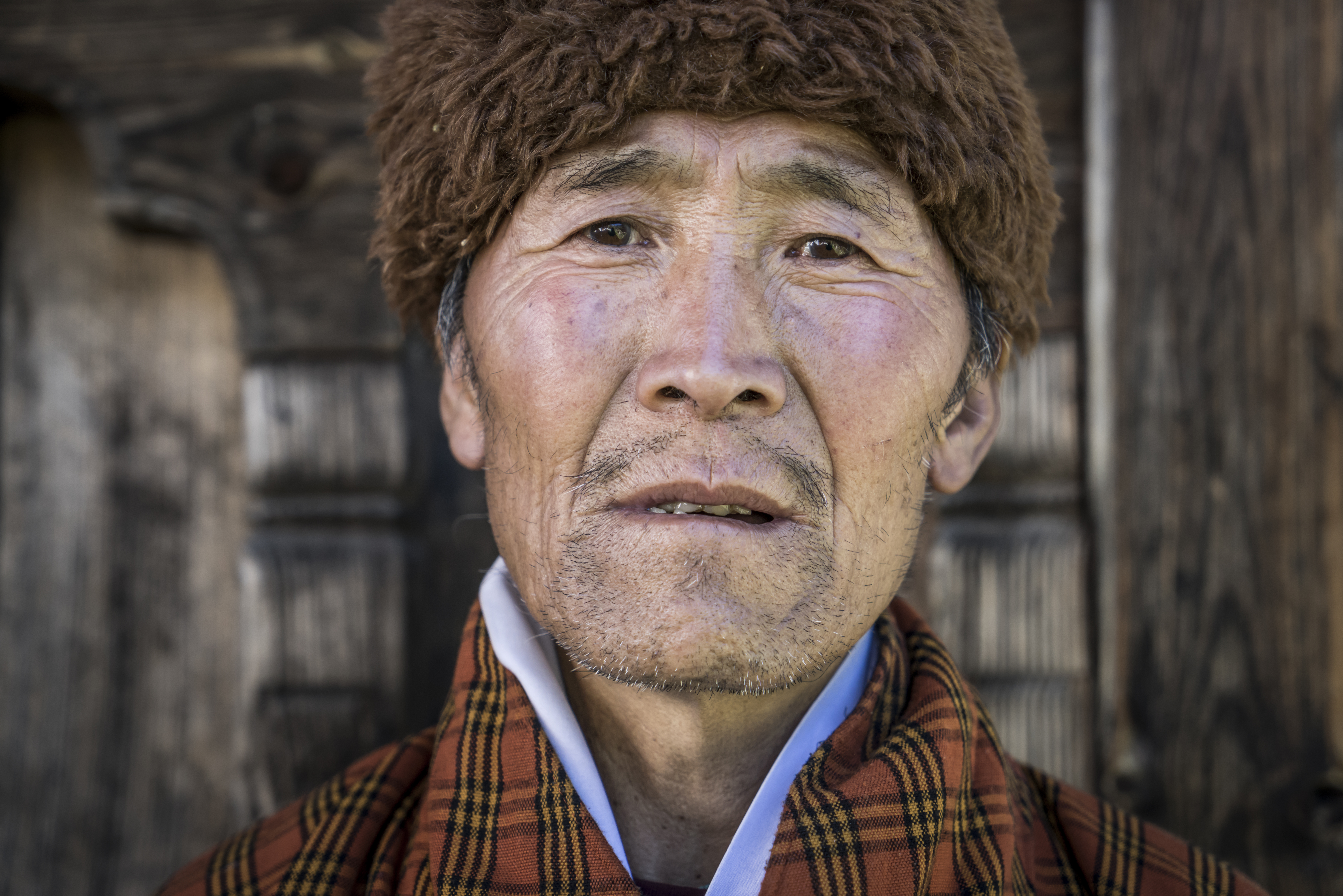
“I am worried about extreme weather changes. The weather used to be fairly similar from one year to another. But it has recently become unpredictable. The lack of snow also worries me. Our water resources will deplete without snow,” says farmer Dorji Tempa, aged 70, from the Nasiphel village.
WWF’s support for Bhutanese farmers is funded through the development cooperation funds of Ministry for Foreign Affairs of Finland. Examples of WWF’s support include the installation of weather stations at mountains to improve weather forecasting. WWF has also developed alternative forms of livelihood, such as providing homestay accommodation to tourists. Tempa earns money from the tourists who stay at her home.

“I was born and raised here. I have witnessed the immense changes in rainfalls and temperatures. Extreme weather events have become more common. When it rains, it pours. And when it’s dry, it’s really dry. Summers have become much hotter. The changes in weather have brought new crops for us, such as potato, chili and rice. I don’t know how the weather will change in the future and how it will affect us,” says Pema, aged 60, from Kitzom.
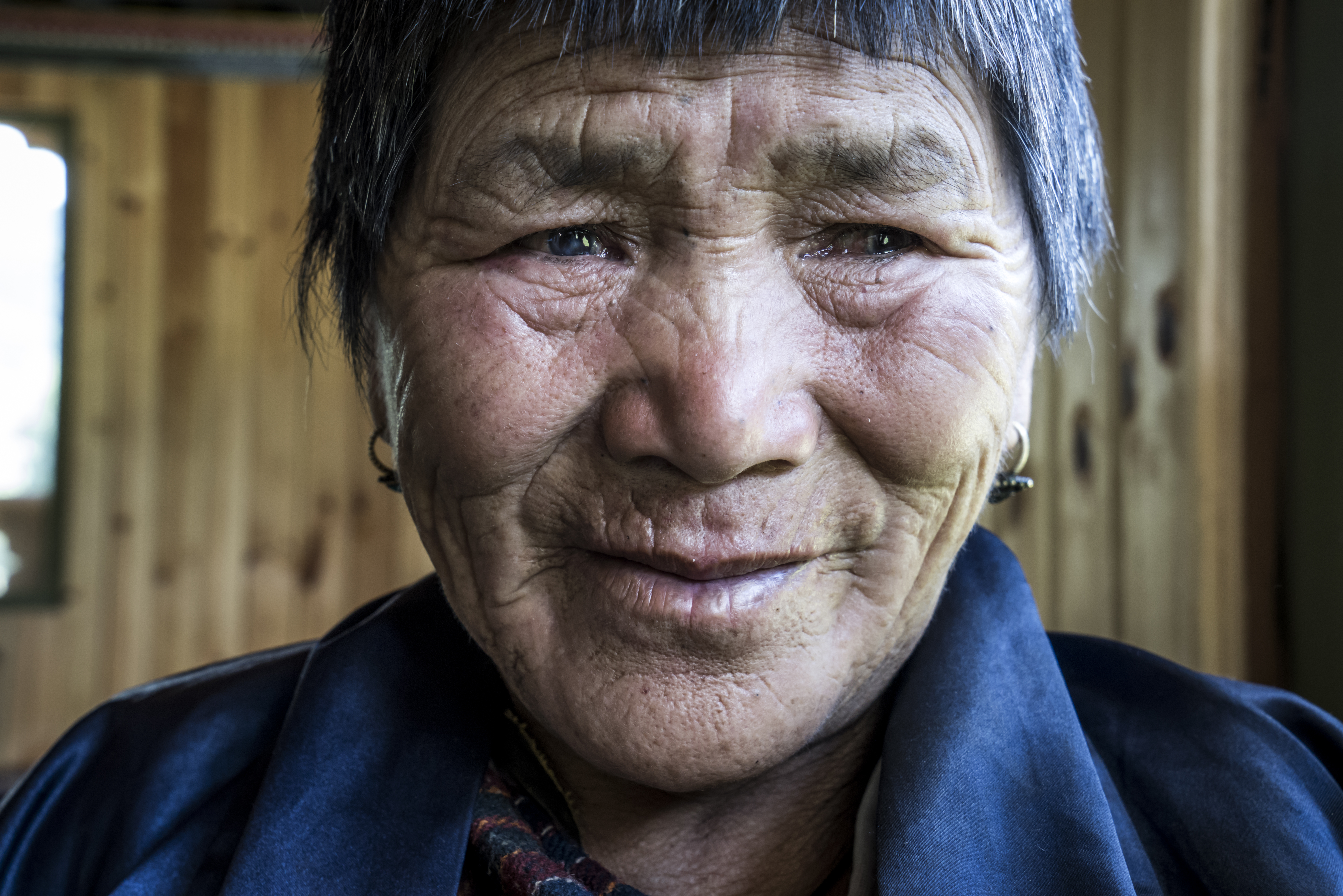
“Nature is everything to us: our lives and livelihood depend on it,” says 70-year-old Namja Dema from the village of Kitzom, summarising the thoughts of the locals.
WWF Finland partners with the Ministry of Foreign Affairs of Finland. The development cooperation in Bhutan is funded partly by the ministry and partly with donations from private sources.

